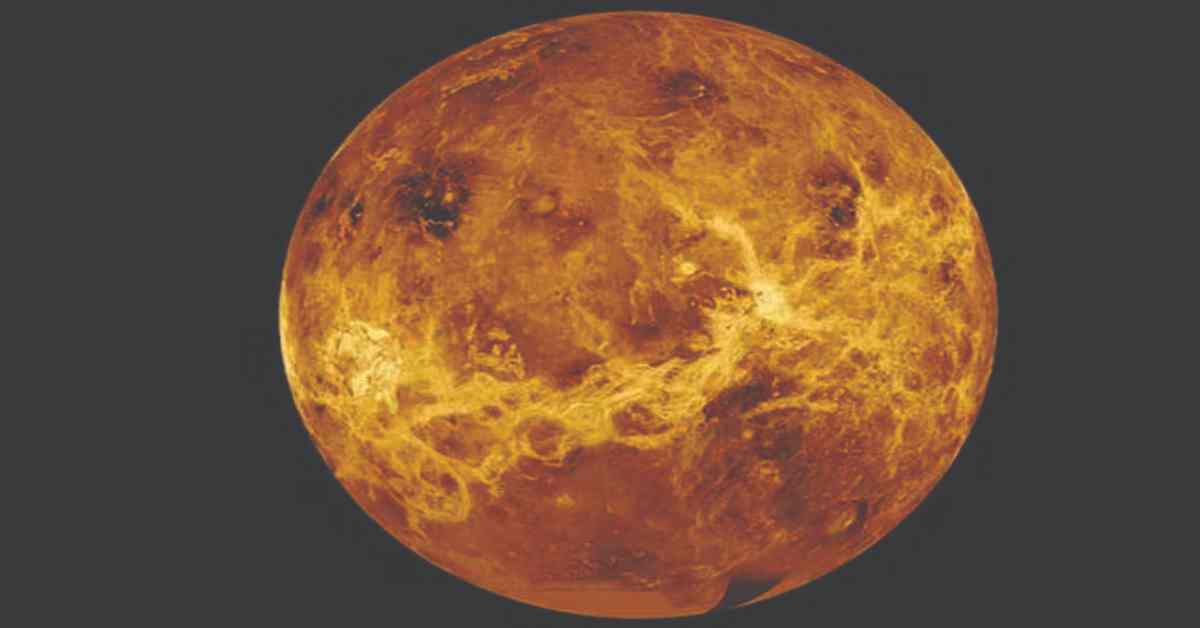Venus Likely Never Had Oceans, New Study Suggests
Volcanism played a key role in the study, as volcanic gases offer insights into a planet’s interior.

Venus, often dubbed Earth’s twin due to its similar size and rocky composition, has long intrigued scientists with the question: Did it ever have oceans like Earth? While Earth boasts water covering 71% of its surface, Venus is a scorching, barren world.
Now, new research has provided compelling evidence that Venus likely never harbored oceans. The study reveals that the planet’s interior is predominantly dry, challenging earlier theories suggesting a wetter past.
Dry Beginnings: What the Study Found
The research, led by Tereza Constantinou, a doctoral student at the University of Cambridge’s Institute of Astronomy, analyzed Venus’s atmospheric chemistry to estimate its water content.
The findings indicate that Venus has been desiccated since its early formation, with a surface largely composed of molten rock.
Volcanism played a key role in the study, as volcanic gases offer insights into a planet’s interior.
On Earth, volcanic eruptions release gases that are over 60% water vapor, reflecting a water-rich mantle.
In contrast, Venusian volcanic gases contain no more than 6% water vapor — strong evidence of a dry interior.
“The atmospheric chemistry suggests that volcanic eruptions on Venus release very little water, implying that the planet’s interior — the source of volcanism — is equally dry,” said Constantinou.
“This supports the idea that Venus has had a long-lasting dry surface and was never habitable.”
Implications for Habitability
Water is considered essential for life as we know it. The study’s findings suggest that Venus never had the conditions necessary for life, debunking earlier hypotheses of ancient oceans or hidden water reservoirs beneath its surface.
“Two very different histories of water on Venus have been proposed,” said Constantinou.
“One imagines a temperate Venus with liquid water for billions of years, while the other envisions a hot early Venus that never condensed surface water. Our findings support the latter.”
Twin Planets, Divergent Fates
Despite their similarities in size, density, and distance from the Sun, Venus and Earth have vastly different environments.
Venus’s surface temperatures soar to 465°C, its atmospheric pressure is 90 times that of Earth, and its atmosphere is laden with sulfuric acid clouds.
“Venus provides a stark contrast to Earth,” Constantinou noted. “Its extreme conditions highlight the diverse evolutionary paths rocky planets can take, even when they share common origins.”
The Road Ahead: Future Missions
The mysteries of Venus continue to draw scientific interest. NASA’s DAVINCI mission, planned for the 2030s, aims to study Venus’s atmosphere and surface using flybys and a descent probe.
Similarly, the European Space Agency’s EnVision mission will focus on radar mapping and atmospheric analysis.
“Venus serves as a natural laboratory for understanding how habitability — or the lack of it — evolves,” said Constantinou.
These missions could provide further insights into why Venus, Earth’s so-called twin, evolved into a hostile, waterless world.
